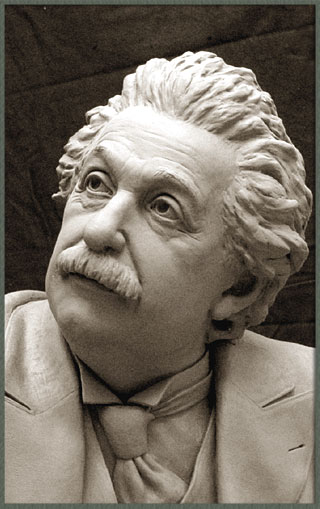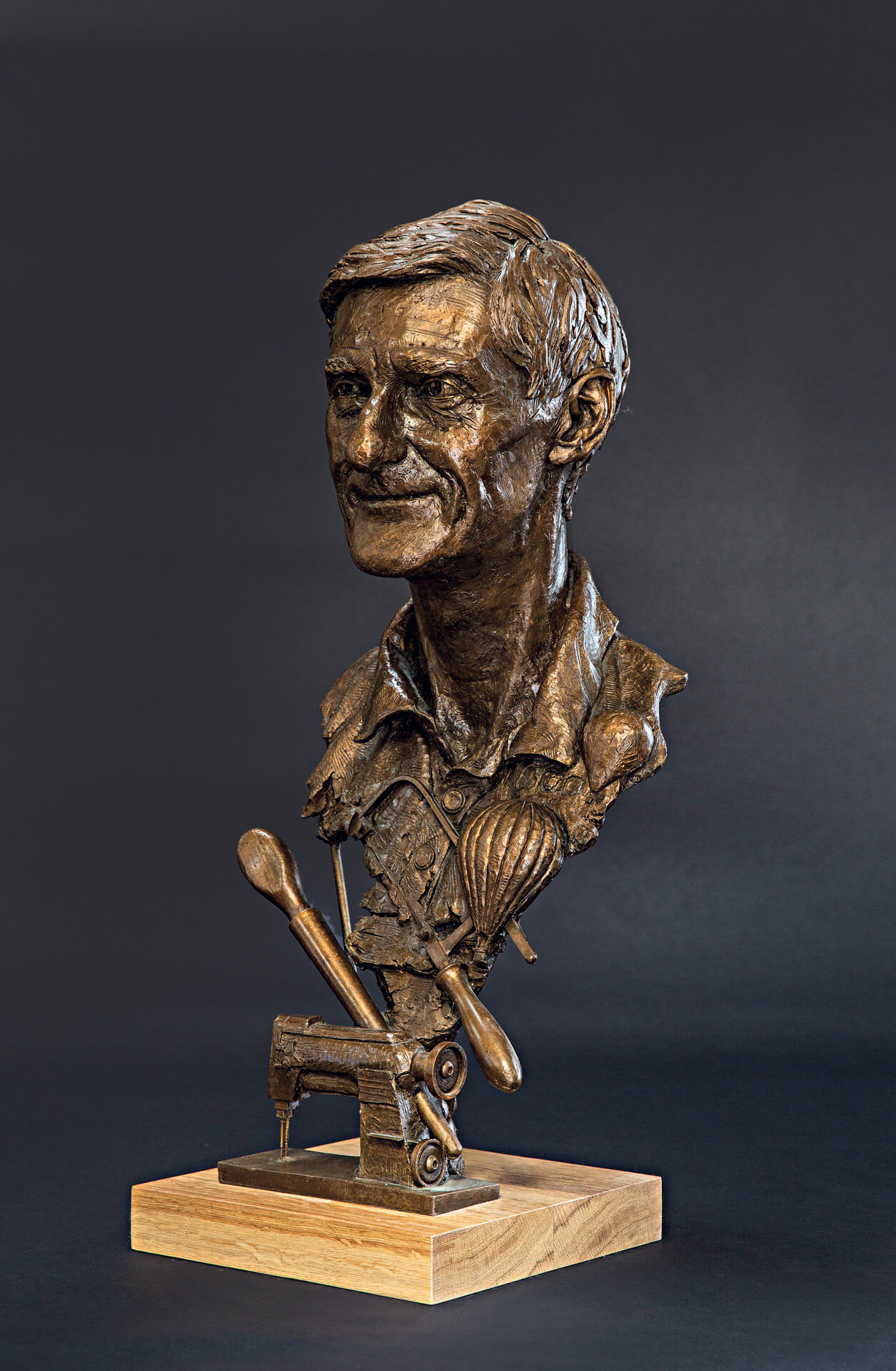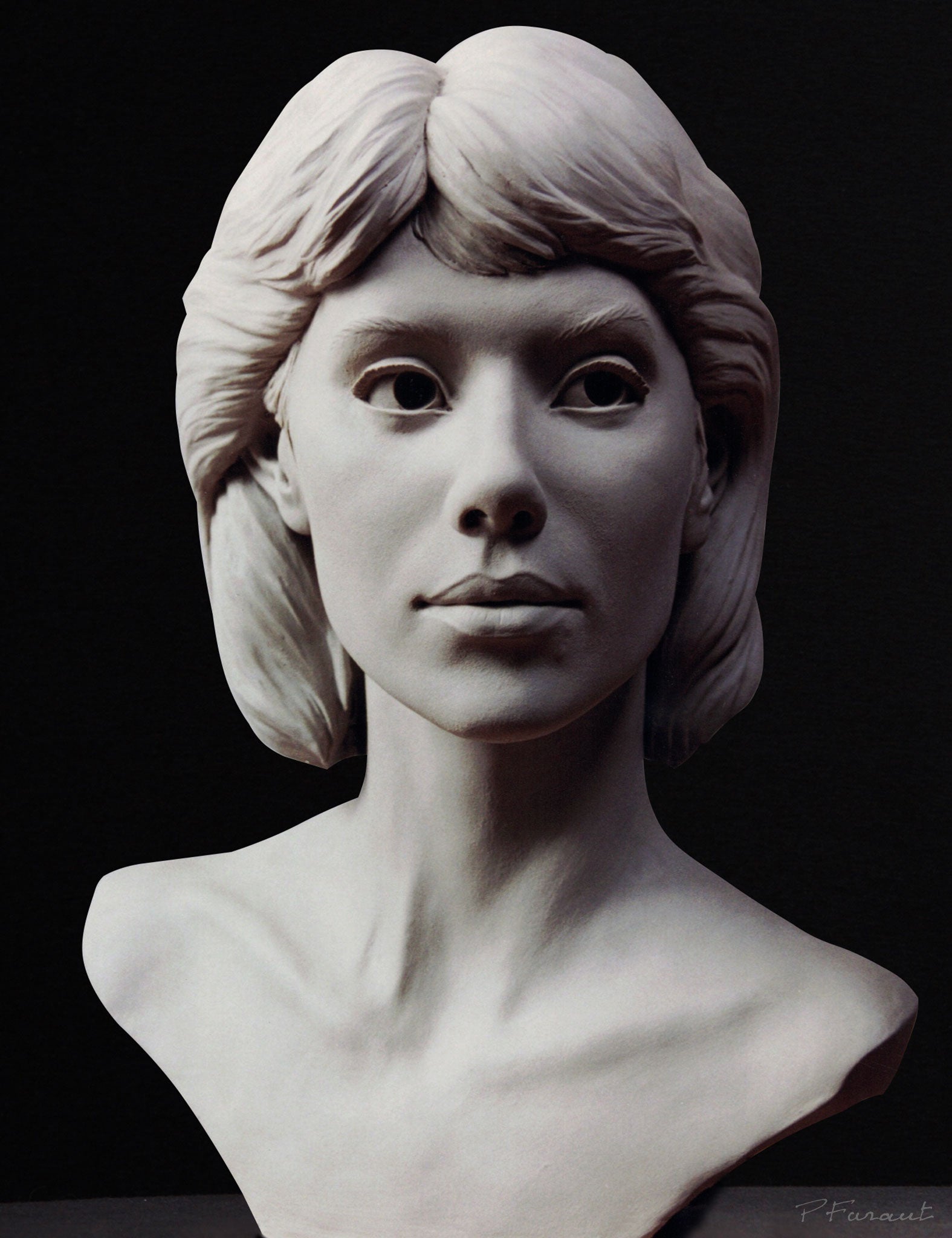Contemporary Marvels: Study the Globe of Contemporary Sculptures
Wiki Article
The Advancement of Sculptures: From Ancient to Modern
The Advancement of Sculptures: From Old to Modern. Portrait Sculptor.Sculpture, among the oldest forms of art, has actually been an important component of human world for centuries. From the ancient people of Egypt and Greece to the contemporary era, sculptures have actually evolved, reflecting adjustments in imaginative methods, materials, and social influences. This trip via time traces the advancement of sculptures, checking out the changes in design, subject matter, and imaginative expression.
Starting with the old world, sculptures crafted from stone and later on bronze recorded the essence of deities, rulers, and everyday life. The Renaissance duration observed a revival of timeless sculpting methods, as musicians looked for to mimic the graceful types of old Greek and Roman sculptures (Robert C Hitchcock Sculptor). In the contemporary period, artists challenged standard boundaries, accepting abstraction and testing with new materials
This exploration will certainly explore the varied development of sculptures, disclosing the abundant tapestry of artistic expression across various durations and societies.

Old Sculptures: From Stone to Bronze
Old sculptures transitioned from being taken of stone to being cast in bronze. This shift marked a substantial evolution in the art of sculpture, permitting greater improvement and detail in the completed works. Rock sculptures, while impressive in their own right, were limited by the nature of the product. Stone required substantial sculpting and forming, typically resulting in a much more simplified depiction of the subject.The intro of bronze as a tool for sculptures brought around a change in artistic expression. Bronze used carvers the chance to create lifelike and elaborate types that were not possible with rock. The procedure of casting bronze allowed for the production of multiple duplicates of a sculpture, allowing bigger circulation and conservation of these creative masterpieces.
The shift from rock to bronze also saw a change in the topic of sculptures. While rock sculptures primarily portrayed gods, goddesses, and mythological numbers, bronze sculptures began to mirror a more comprehensive variety of topics, including day-to-day people and pets. This growth of subject issue showcased the versatility and flexibility of the bronze medium.
Renaissance Rebirth: Forming in the Classical Design
The Renaissance rebirth of sculpture witnessed a rebirth in the timeless design, building upon the innovations made throughout the shift from rock to bronze in ancient sculptures. During this duration, artists looked for to recreate the timeless aesthetic and ideals of appeal that prevailed in old Greek and Roman sculptures.Among the vital attributes of the Renaissance rebirth was the emphasis on naturalism and the human kind. Carvers like Donatello and Michelangelo strove to catch the anatomical information and expressions of their subjects with unprecedented accuracy. They studied the human body and incorporated their monitorings right into their sculptures, causing sensible and lifelike representations.
Another important aspect of the Renaissance revival was the expedition of viewpoint and depth. Musicians made use of techniques such as contrapposto, where the weight of the body is changed away, developing a feeling of movement and dynamism. They also explore various products, including marble and bronze, to attain a degree of elegance and ins and out in their sculptures.

Modernism and the Avant-Garde: Breaking Conventional Borders
Throughout the Innovation and Avant-Garde movements, sculptors pressed the boundaries of conventional imaginative conventions. This period, which arised in the late 19th and very early 20th centuries, saw a significant change in the way musicians approached sculpture. Denying the concept of art as simple imitation, modernist carvers sought to check out brand-new forms, materials, and principles.
Among the key characteristics of modernist sculpture was the emphasis on abstraction. Artists relocated away from reasonable depictions and rather concentrated on capturing the significance of the topic via simplified forms and geometric forms. This separation from traditional representation enabled musicians to express their feelings and ideas in a more individual and subjective fashion.

Contemporary Sculptures: Checking Out New Products and Concepts
With a concentrate on exploring YOURURL.com new products and concepts, contemporary sculptures have transformed the area of art. Artists today are pressing the limits of standard sculpture by utilizing ingenious materials and experimenting with abstract principles. These sculptures test standard ideas of kind, materiality, and significance, inviting audiences to take part in a thought-provoking and new creative experience.Contemporary artists are accepting a large variety of products, including plastic, glass, steel, and also raw material. They are not restricted to the typical tool of rock or clay, permitting better freedom of speech and trial and error. This change in the direction of unconventional materials has actually opened new possibilities for artists to create sculptures that are dynamic, interactive, and aesthetically striking.
In addition to checking out new materials, modern sculptures also look into facility and abstract principles. Musicians are currently discovering themes such as identity, social issues, and the setting, making use of sculpture as an effective tool for social discourse and introspection. These sculptures challenge customers to think critically and involve with art on a much deeper level, triggering conversations and prompting psychological responses.
Global Impacts: Sculptural Traditions From Worldwide
Sculptural customs from different areas of the world have actually substantially formed the evolution of sculptures throughout background. The global impacts on sculpture have varied and have contributed to the splendor and variety of artistic expressions. From the old worlds of Egypt, Greece, and Rome to the complex makings of Eastern societies, each region has actually created its special sculptural customs that have actually affected musicians throughout time.In ancient Egypt, sculptures were created mostly for spiritual and funerary objectives. The renowned sculptures of pharaohs and gods, such as the Great Sphinx and the bust of Queen Nefertiti, showcase the Egyptians' mastery of stone carving and their idea in the afterlife.

In ancient Rome, sculpture served both artistic and political purposes. Roman sculptures commonly shown emperors, generals, and mythical numbers, reflecting the power and splendour of the empire. The marble statue of Augustus of Prima Porta and the monumental Arc of Constantine are notable examples of Roman sculptural accomplishments.
Asian sculptural traditions, especially in India, China, and Japan, have additionally had an extensive impact on the development of sculptures. Indian sculptures, such as the elaborately sculpted holy places of Khajuraho and the gigantic sculptures of Buddha, exhibit a rich combination of religious, mythological, and architectural elements. Chinese sculptures, identified by their fine craftsmanship and interest to detail, frequently represent deities, animals, and fabulous figures. Japanese sculptures, affected by Buddhism, stress simpleness and serenity, seen in the serene statues of Buddha and the elegant art of bonsai.
The global influences on sculpture proceed to evolve in the contemporary period. As we look to the future, it is particular that the worldwide impacts on sculpture will proceed to shape and redefine this old art type.
Conclusion
To conclude, the advancement of sculptures has seen a change from old rock and bronze functions to the timeless rebirth during the Renaissance. This was adhered to by the splitting of conventional limits via modernism and the avant-garde activity. Today, contemporary sculptures discover new products and concepts, while also drawing inspiration from international sculptural practices. The journey of sculptures reflects the ever-changing imaginative expressions and social impacts throughout history.From the old people of Egypt and Greece to the modern-day era, sculptures have actually developed, mirroring adjustments in imaginative techniques, materials, and social impacts.Beginning with the old globe, sculptures crafted from rock and later bronze caught the significance of divine beings, rulers, and day-to-day life.Old sculptures transitioned from being carved out of stone to being cast in bronze. While stone sculptures primarily illustrated gods, goddesses, and mythological numbers, bronze sculptures began to reflect a more comprehensive range of topics, including daily people and animals.In final thought, the advancement of sculptures has actually seen a shift from ancient stone and bronze functions to the timeless rebirth during the Renaissance.
Report this wiki page